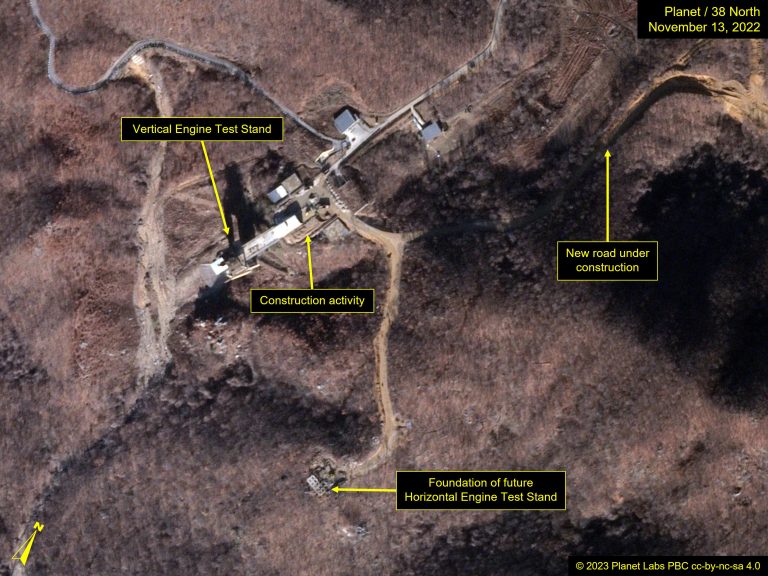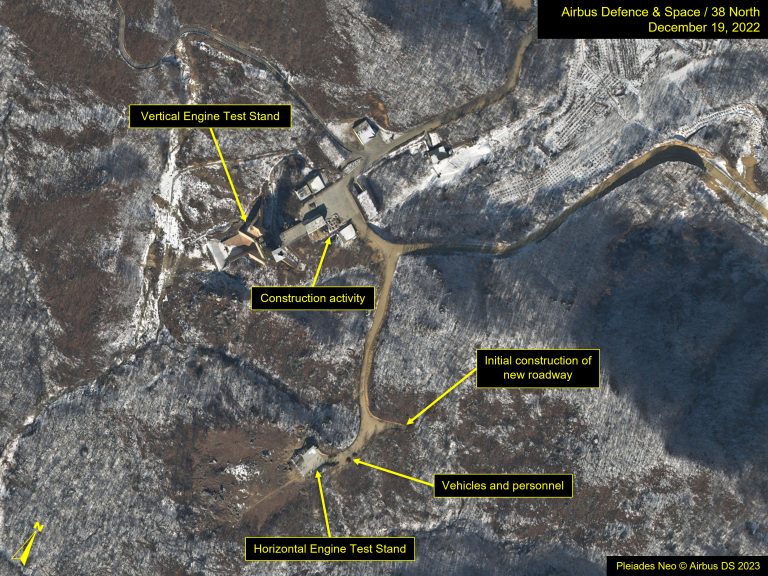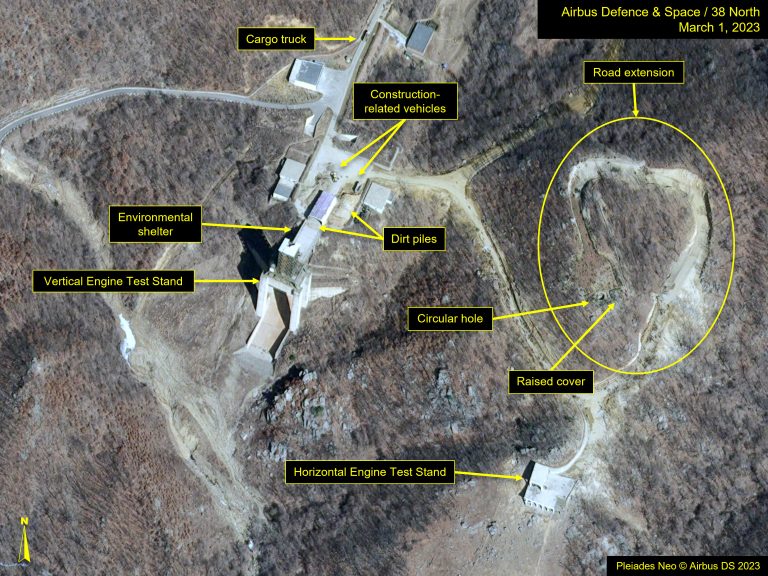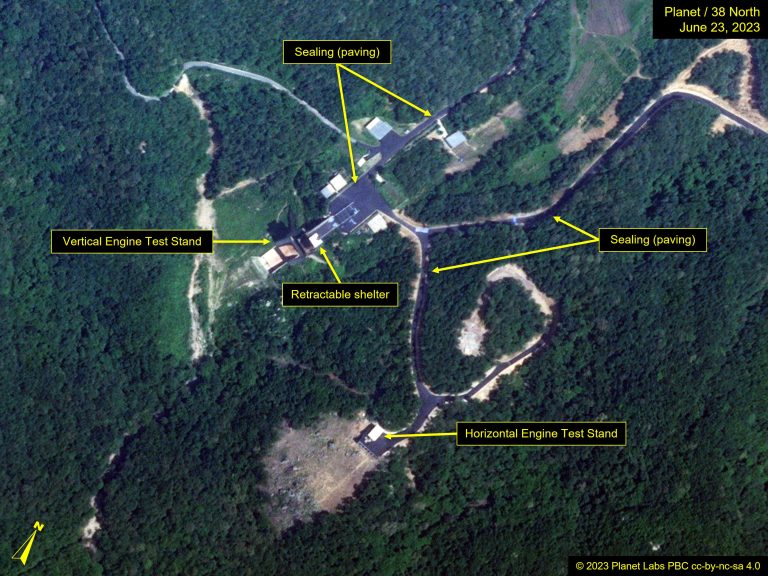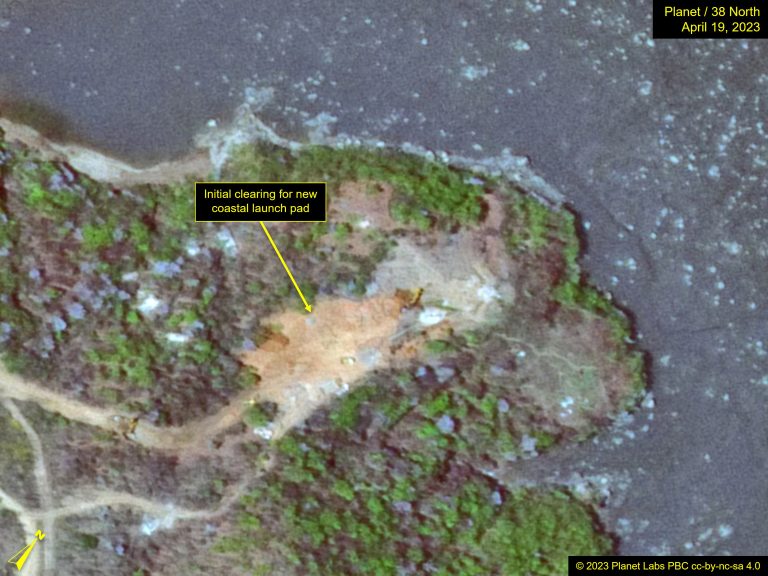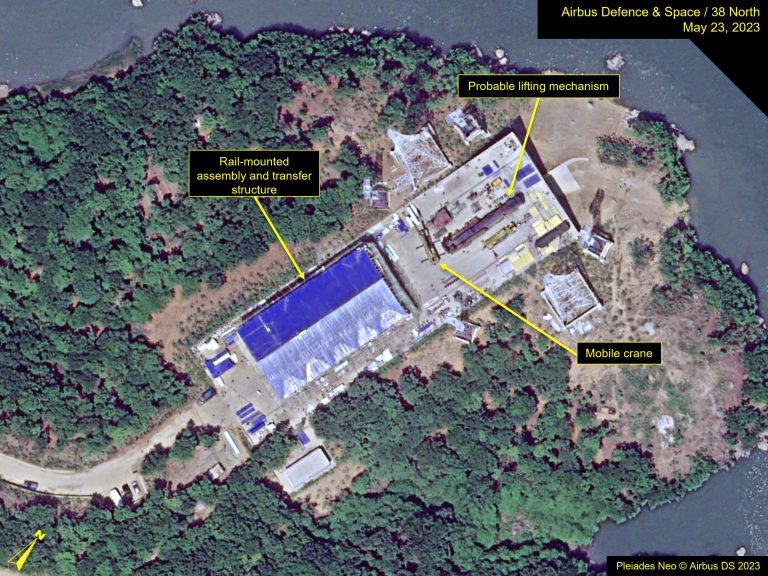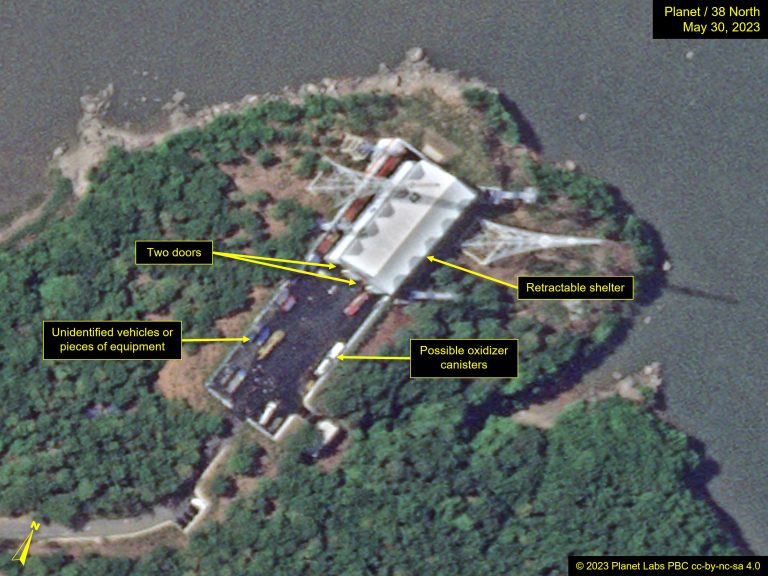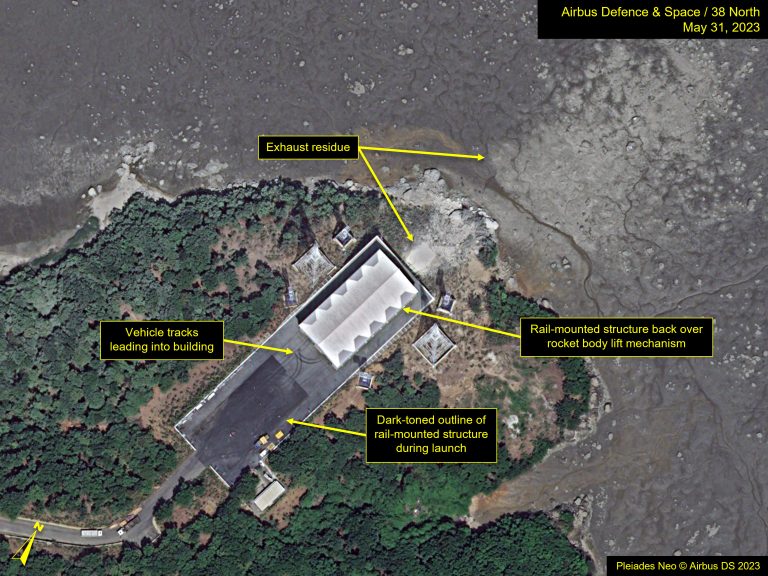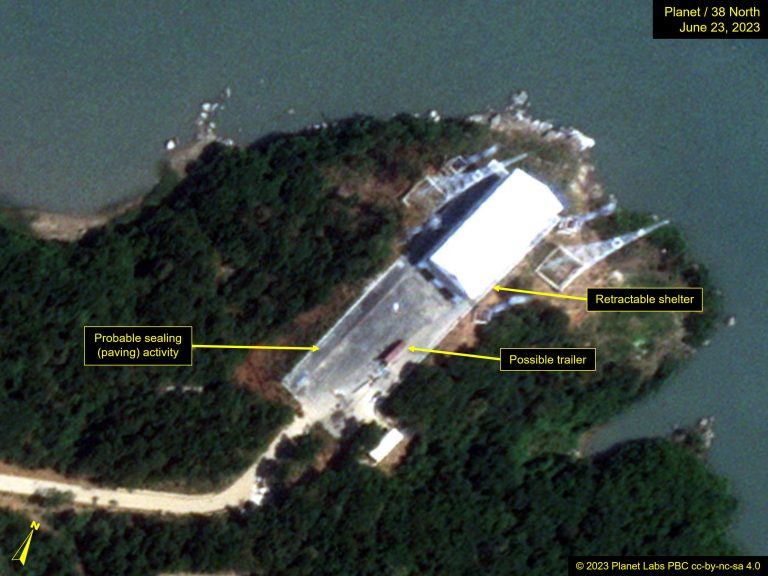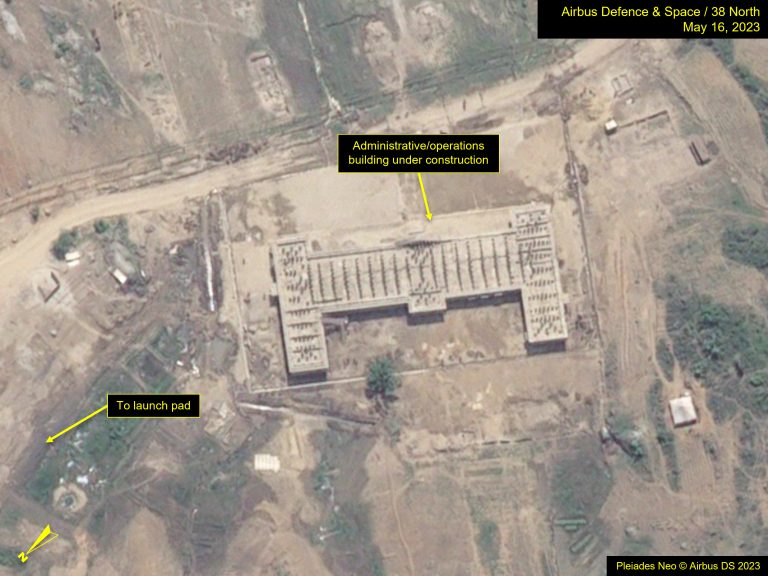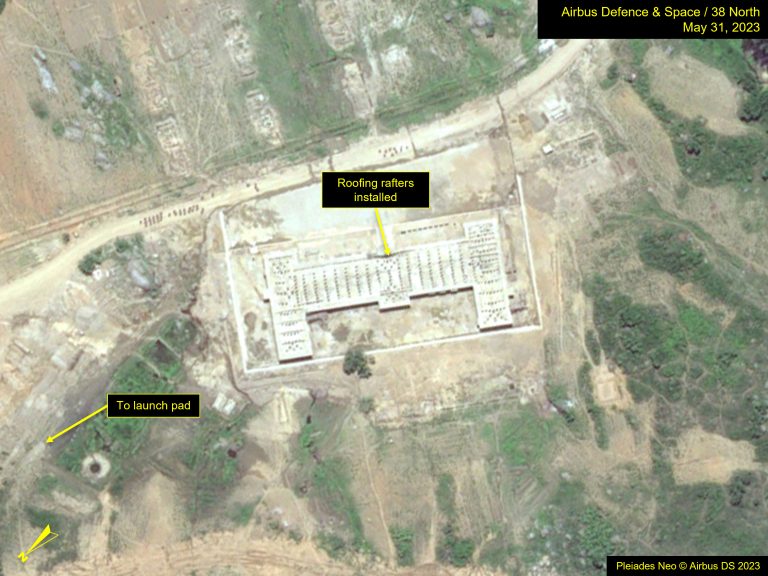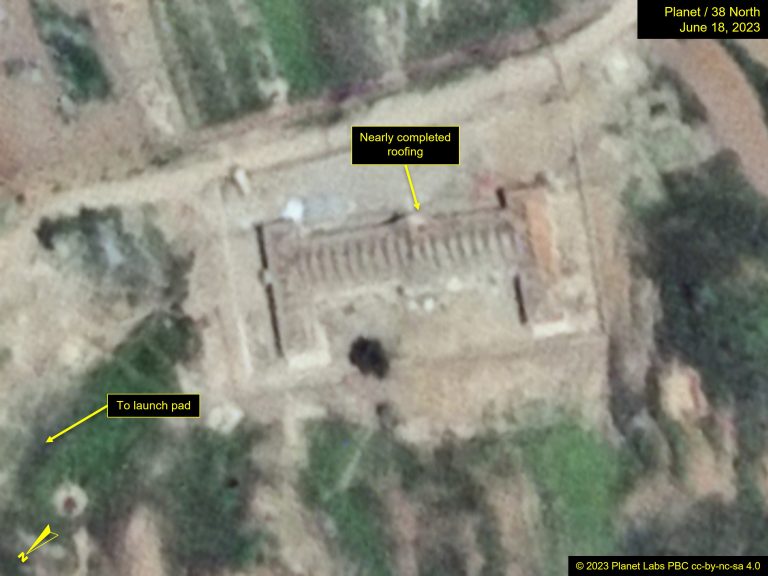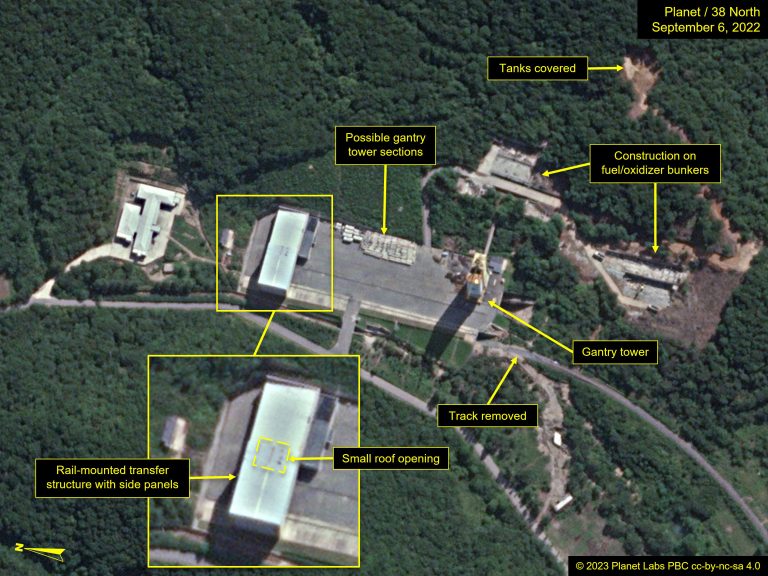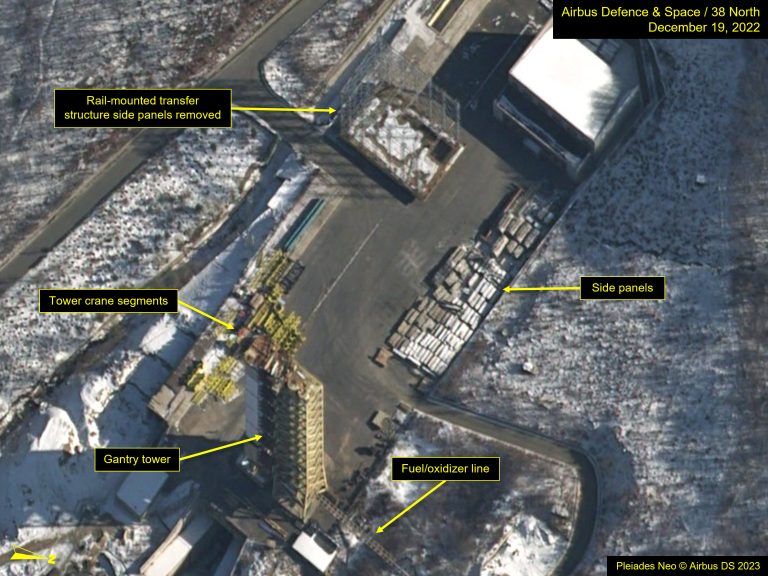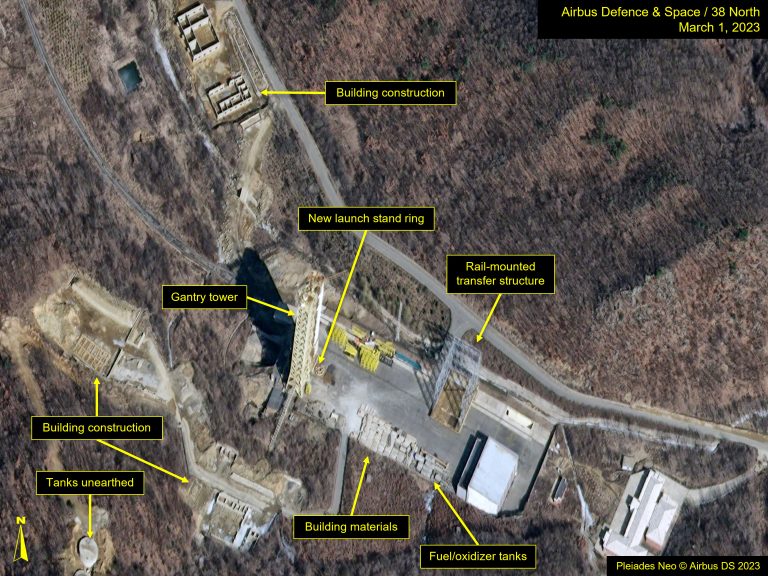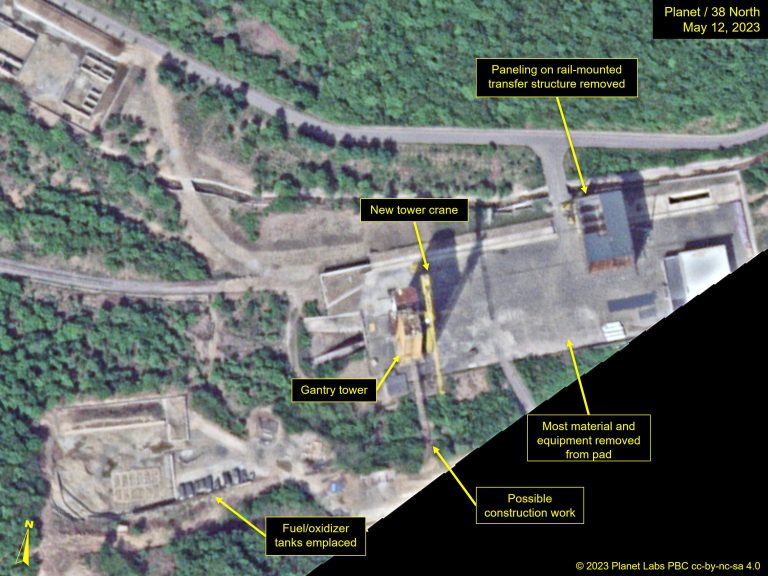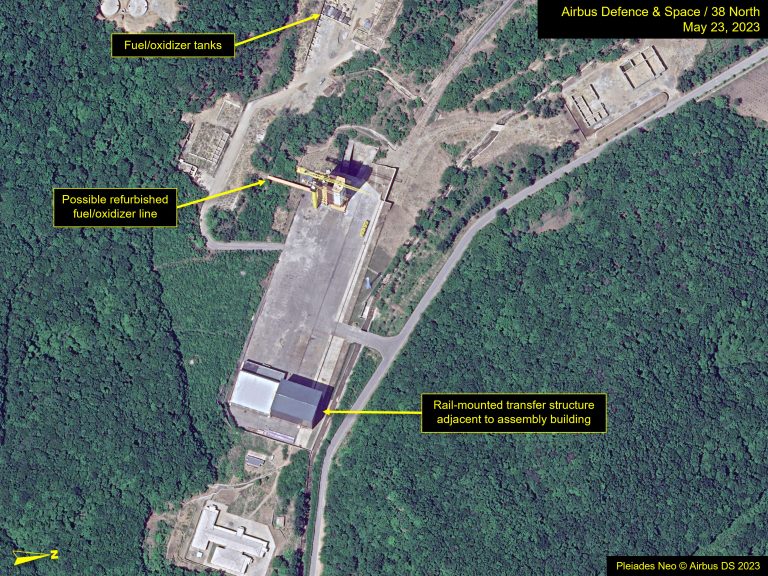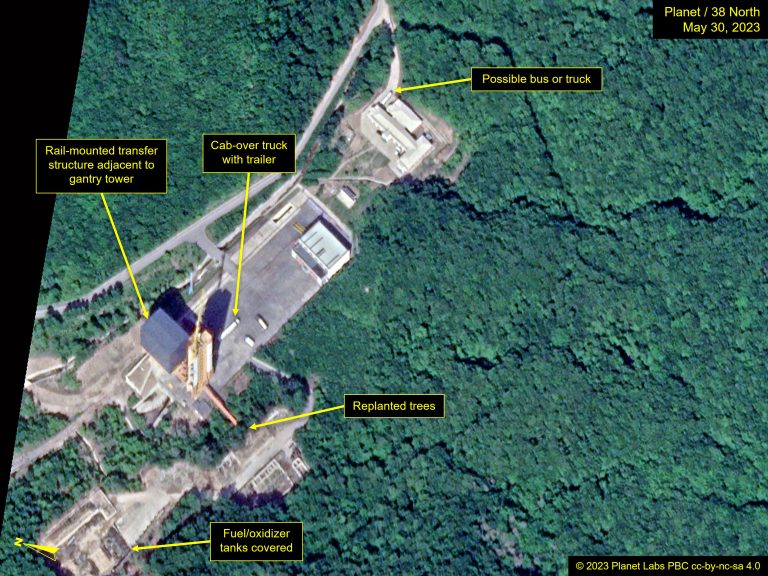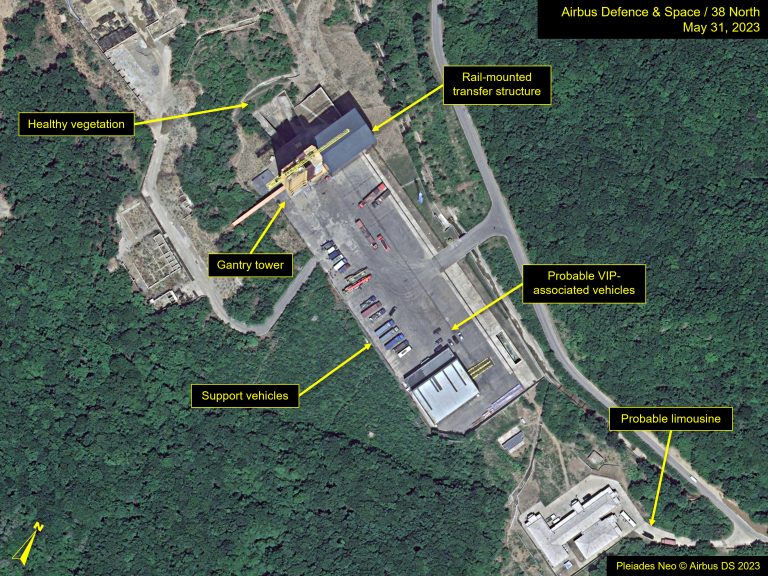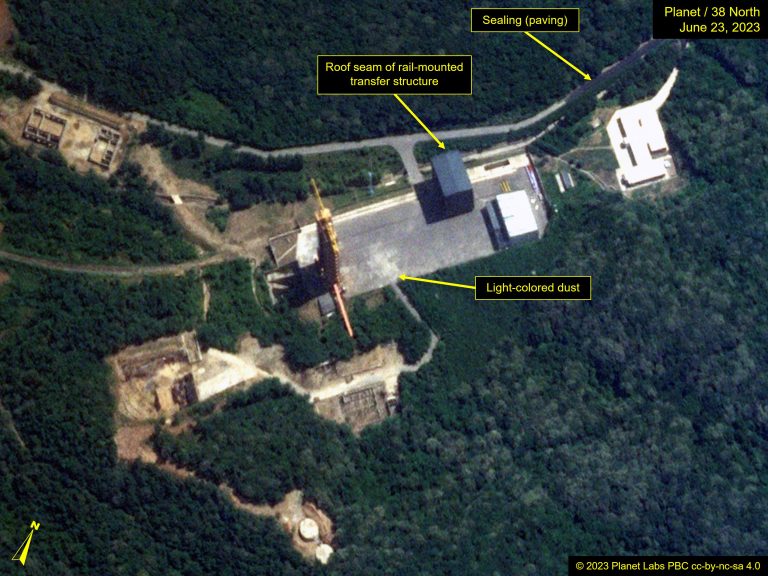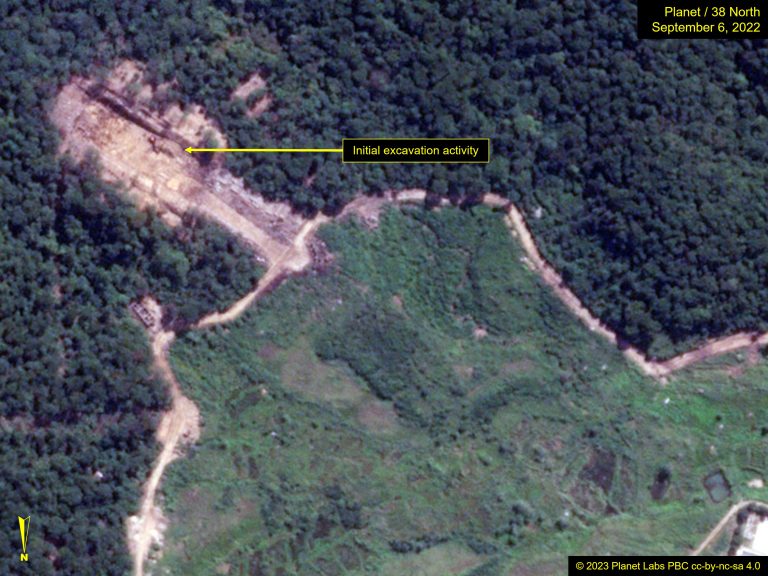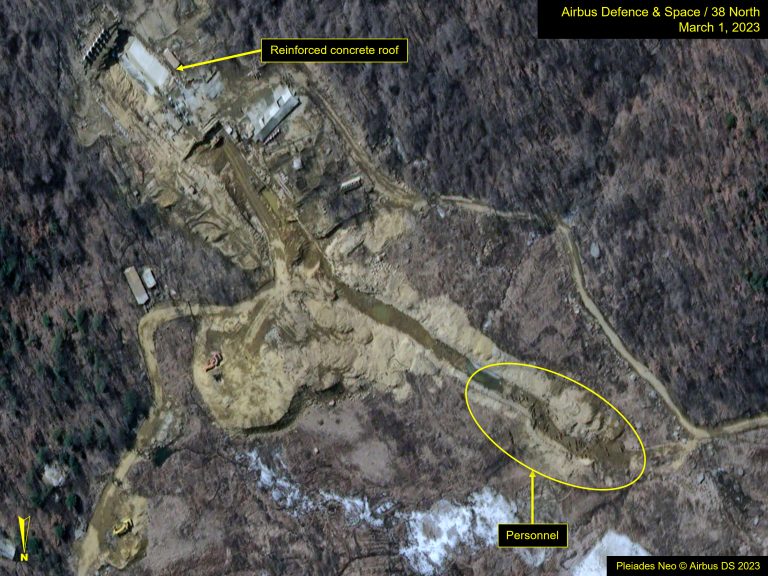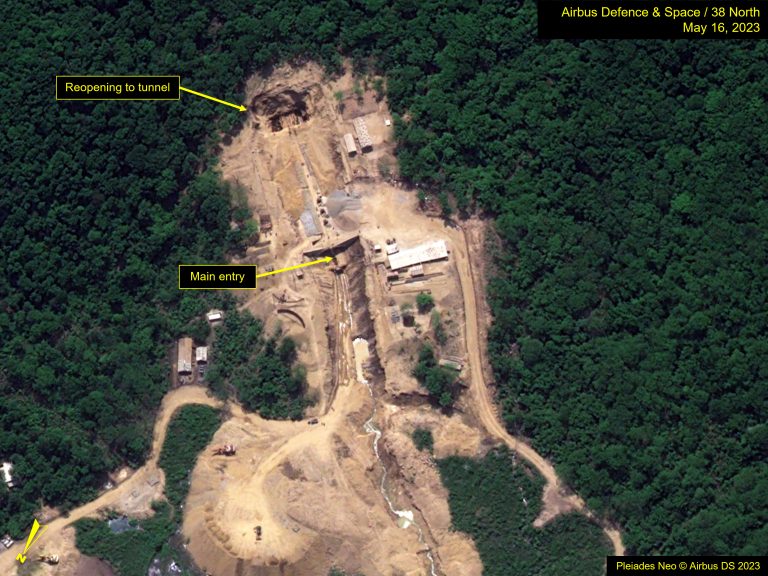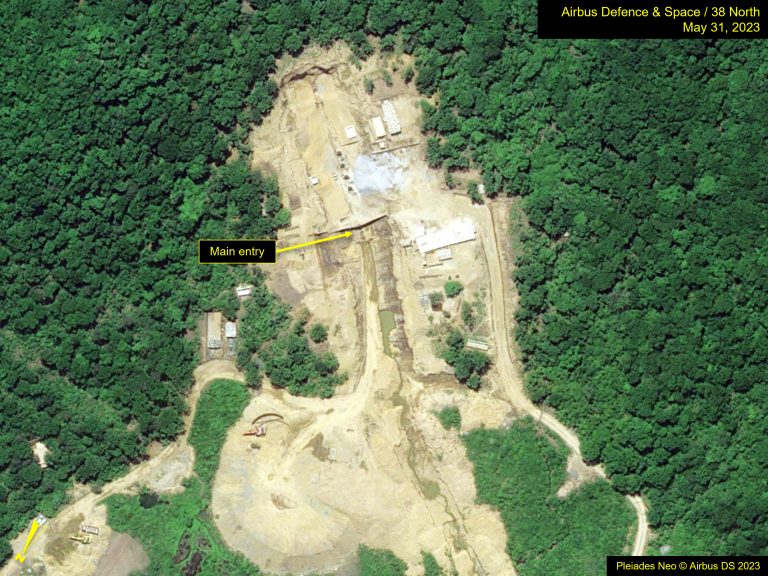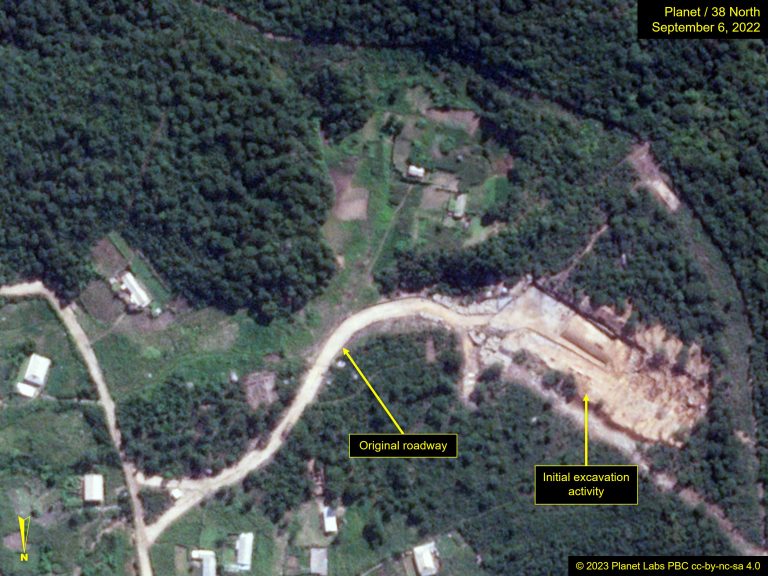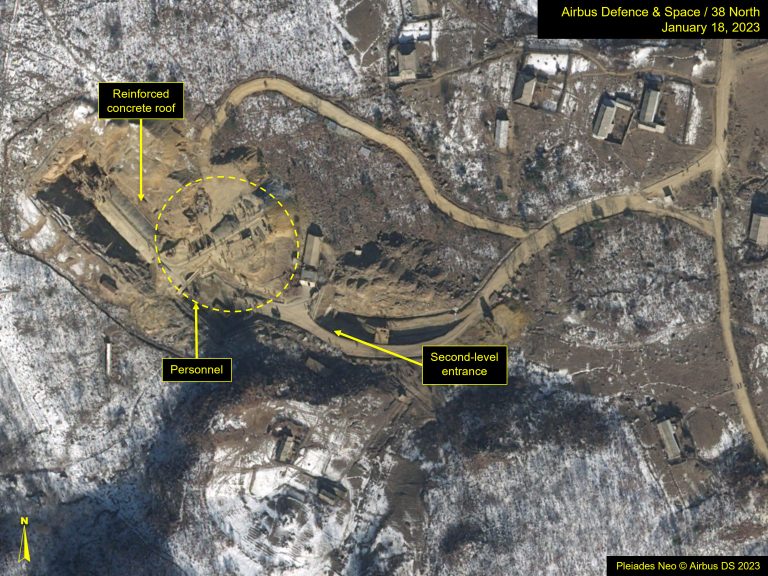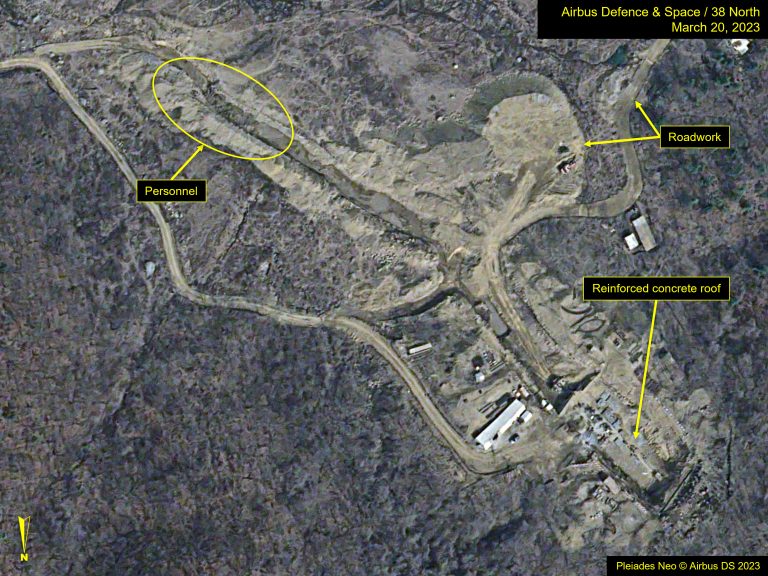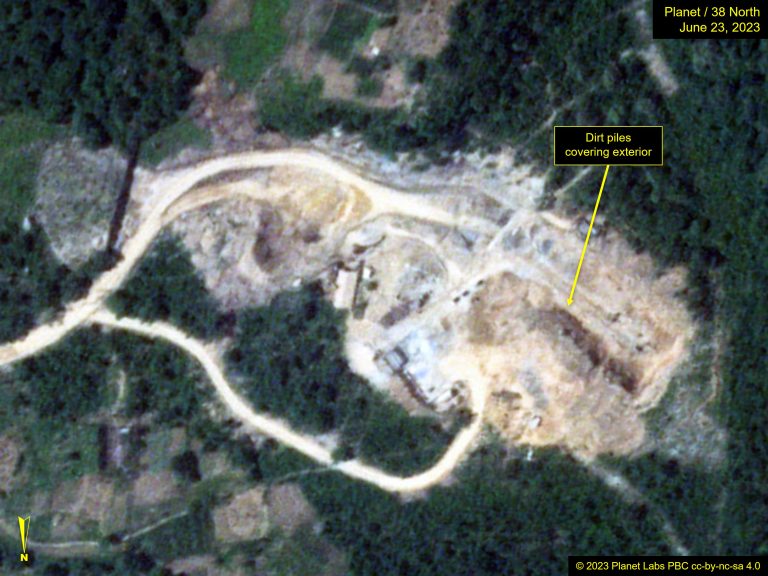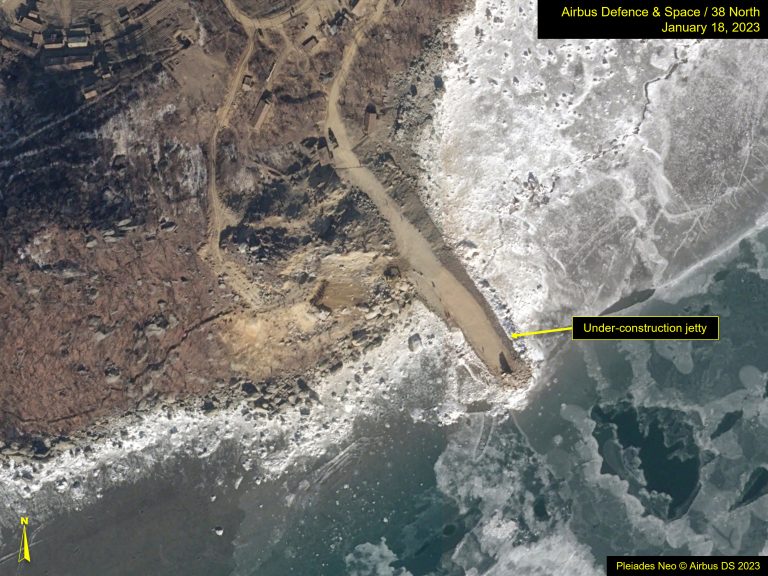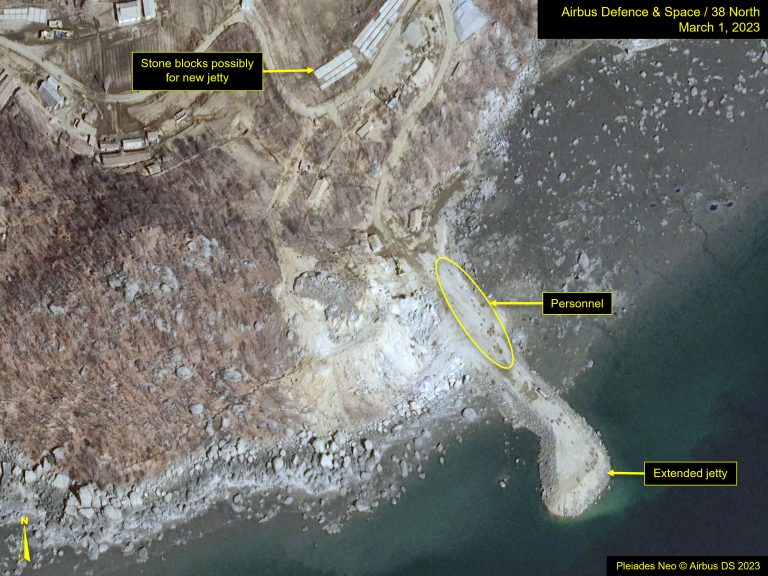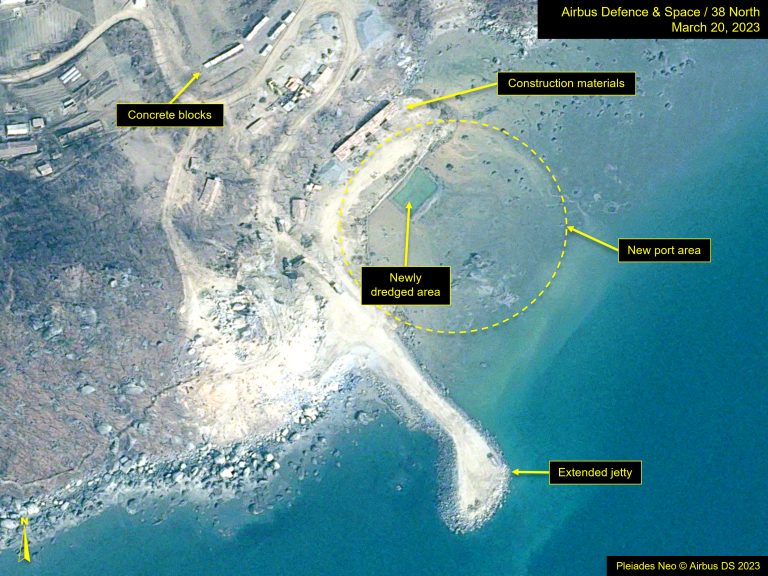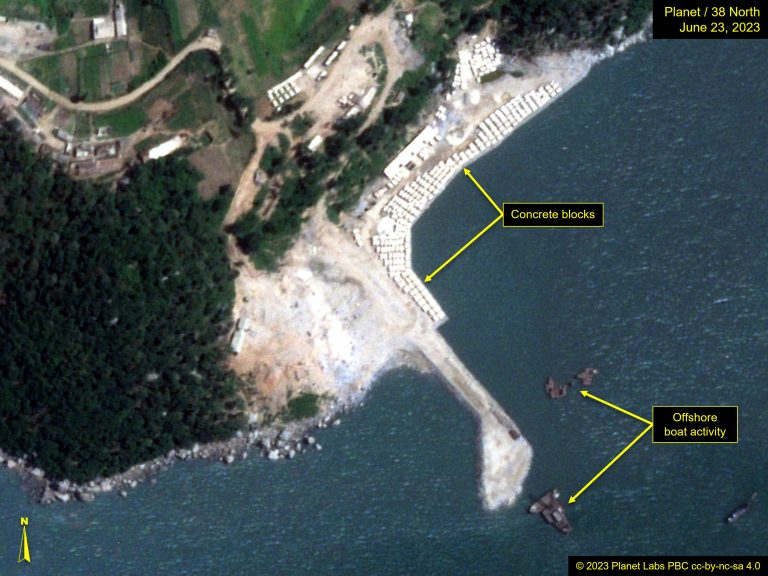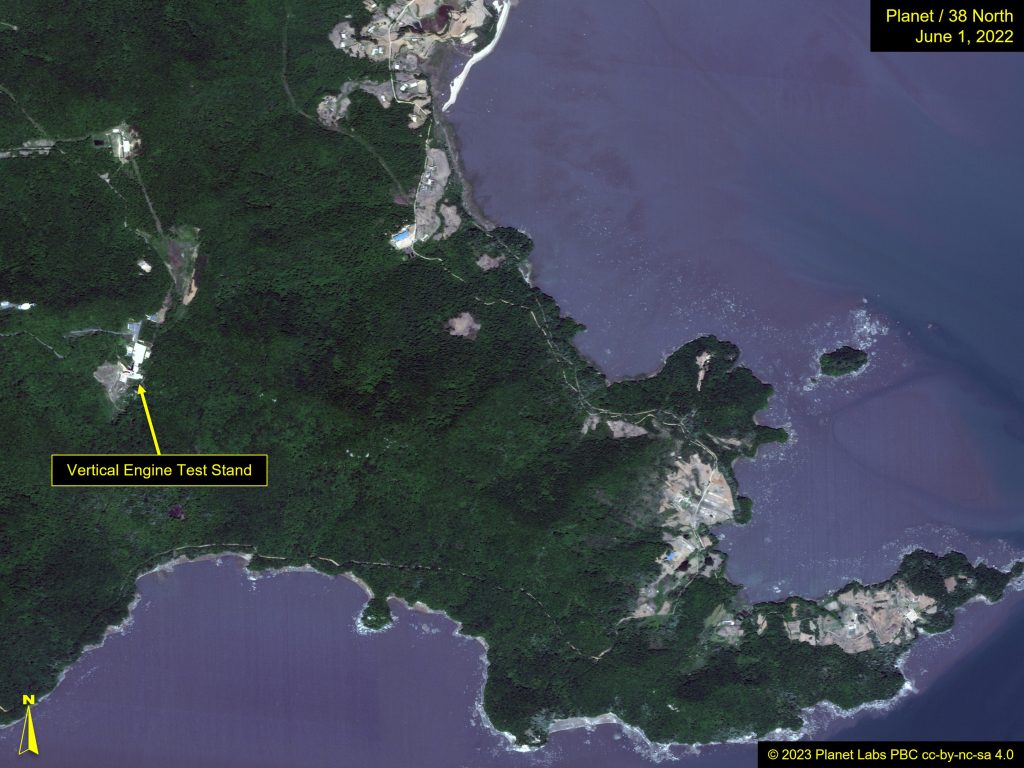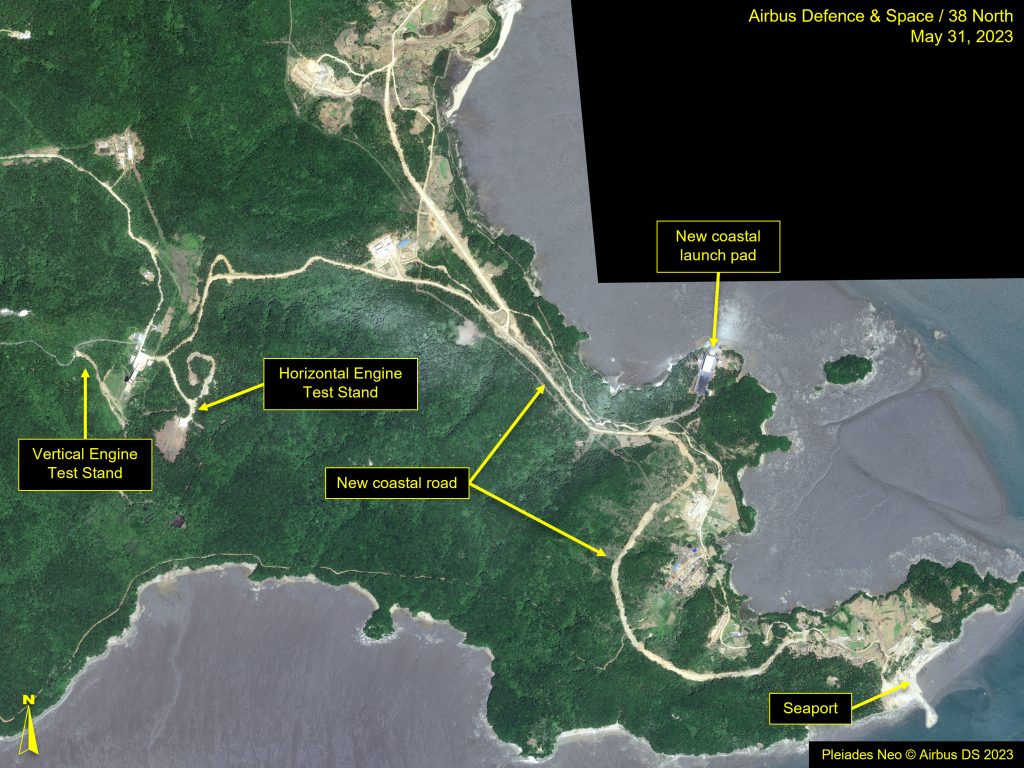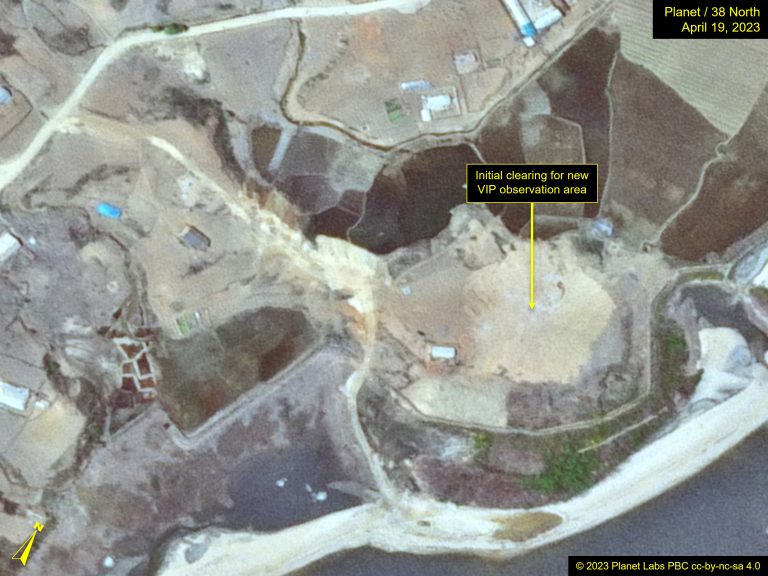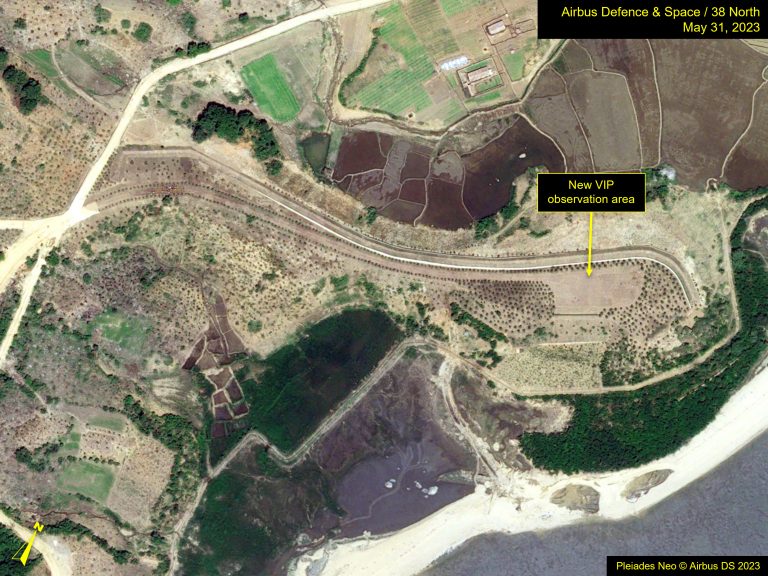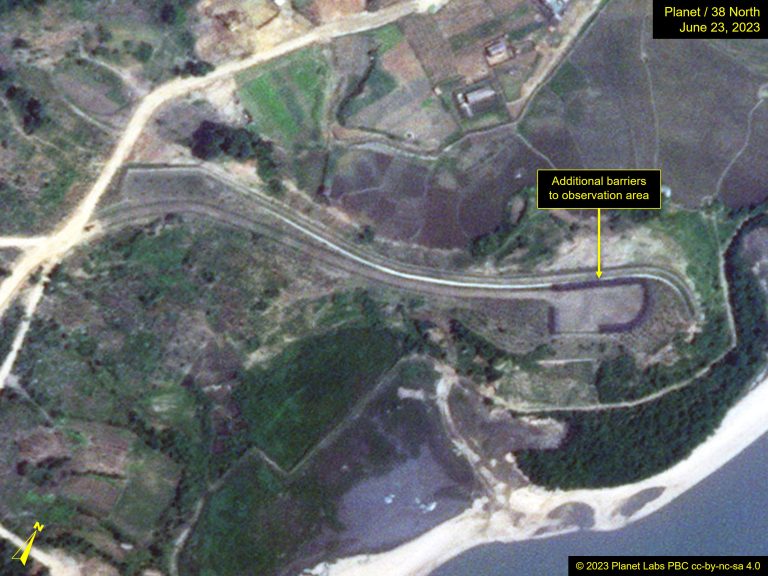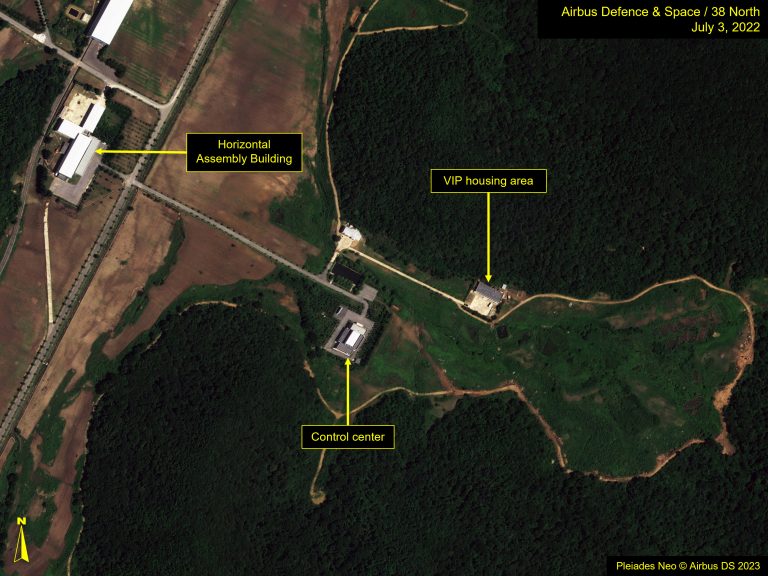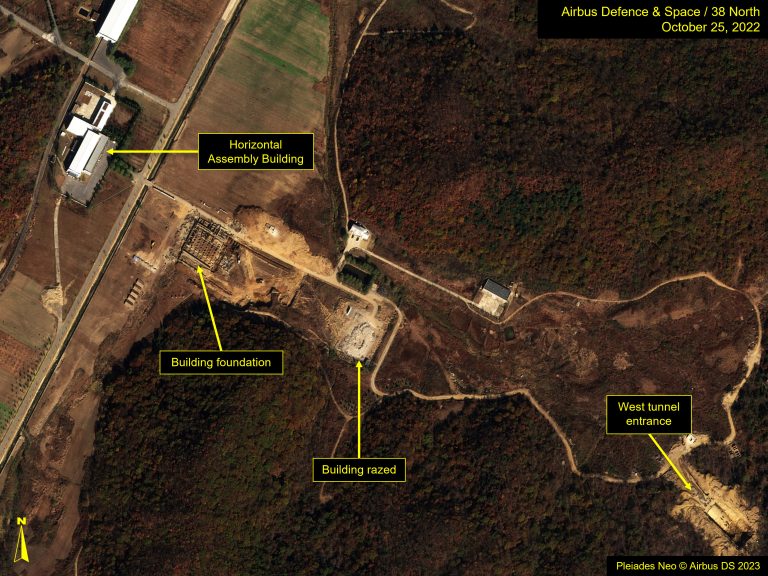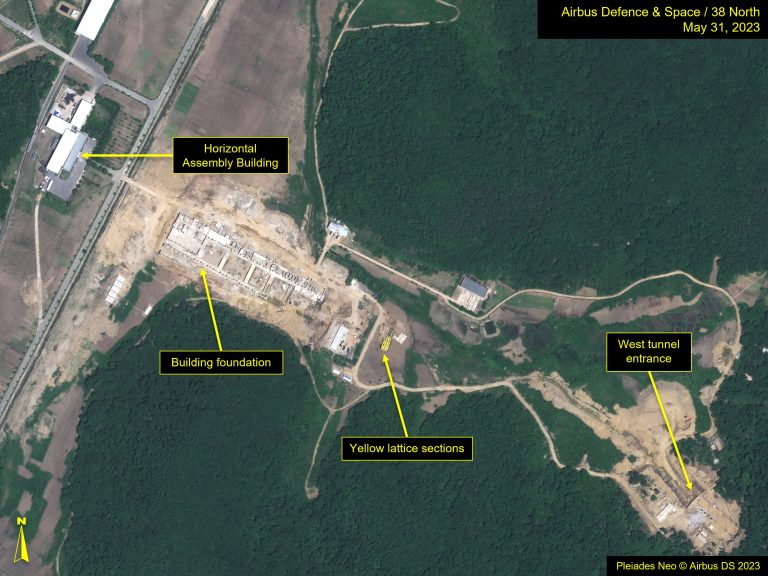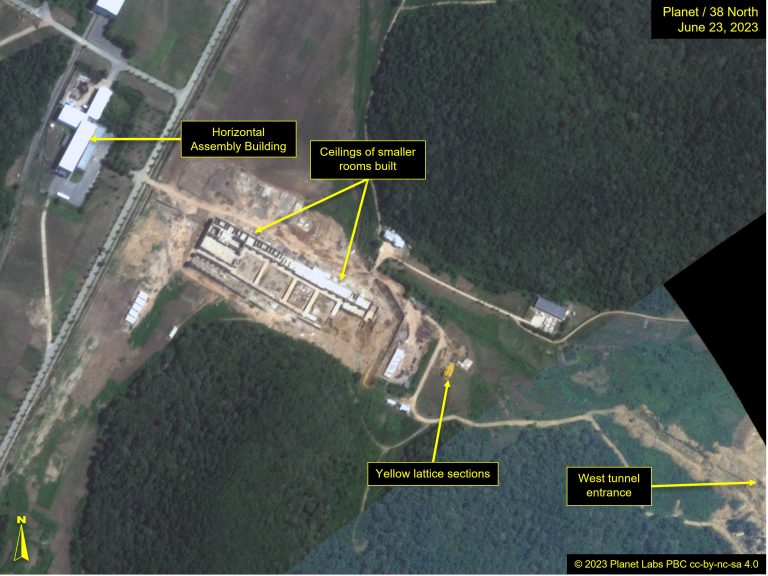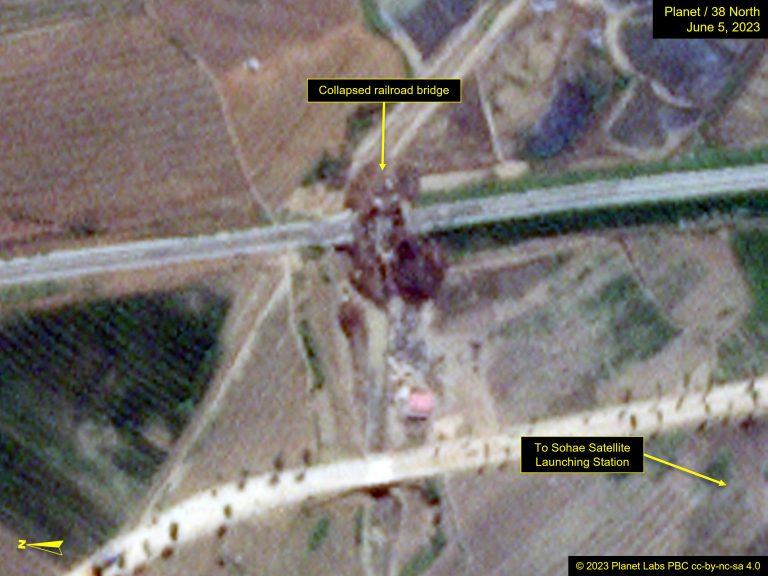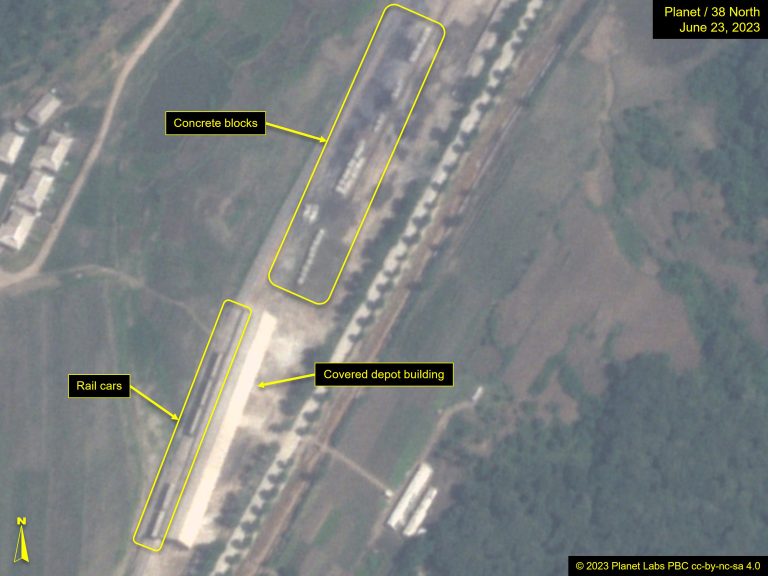Sohae Satellite Launching Station: Progress Continues Toward Kim’s Modernization and Expansion Plans
Since Kim Jong Un’s March 2022 visit to the Sohae Satellite Launching Station, several changes have occurred to achieve the goals he set forth to expand and modernize the site. The May 31 satellite launch attempt, while ending in failure, showcased some of the modifications that have been made to facilitate the launch of more and larger satellite launch vehicles (SLVs).
Kim’s plans for the site included a series of tasks, most of which are still underway in different areas at Sohae. The most significant additions to the site have been a Horizontal Engine Test Stand and a coastal launch pad. Long-term projects have included refurbishment of the main satellite launch pad, a tunnel system that leads from the secure facility to the new roadway system, a seaport to the south that enables sea transport to the site, and an expanded roadway system to and from Sohae down to the seaport.
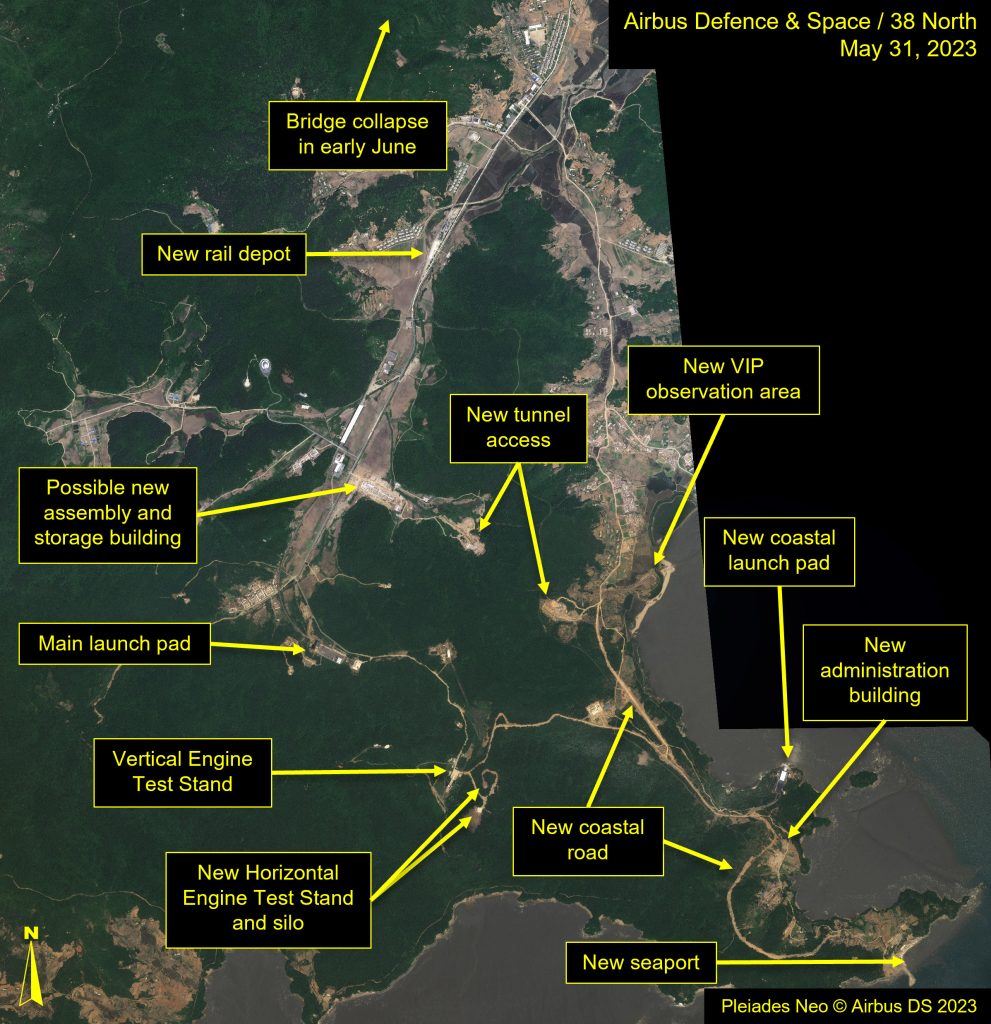
The Engine Test Stand Area
The engine testing area showed the most rapid changes since Kim’s visit in March of 2022. On commercial satellite imagery from November 13, 2022, activity was observed around the Vertical Engine Test Stand (VETS), including multiple construction vehicles and dirt piles. Construction of a new road routed toward the coast had begun, and the foundations for a new Horizontal Engine Test Stand (HETS), which will facilitate the testing of solid-fuel rocket motors, had been laid. By December 15, 2022, the HETS had been completed, built and used to test a solid rocket engine.
A possible test silo was rapidly constructed and completed by March 1, 2023 and was likely the location of a March 19 KN-23 short-range ballistic missile test.
Since the May 31 satellite launch attempt, construction activity has picked up at the VETS, where large, liquid-fuel engines are tested. Between June 5 and June 9, 2023, the environmental shelter had been moved onto the ramp connecting the apron to the test stand, and the dirt piles had been removed. Several vehicles were present starting June 9, but by June 16, all had left. While this appeared to be possible test preparation activity, there has been no visible evidence or reports of an engine test having been conducted as of yet.
Imagery from June 18 revealed that a dark sealant was being applied to the apron, a process not seen since late fall of 2016.
Imagery from June 23 revealed further application of the dark sealant extending beyond the VETS. The stretch of road from the main launch pad to the VETS has been sealed (paved), and from there, the sealant extends out in two directions.
First, the road to the HETS and the HETS pad has been sealed, and the road leading up the hill to the silo is having sealant applied as well.
Second, the road which extends from the test stand area to the new coastal road has had about half of the roadway sealed (paved). This practice of improving the road and pad surfaces highlights the importance of these areas within the launching station, where we can expect significant activity in the future.
In addition to the sealing (paving) process, imagery from June 23 also revealed the partial dismantlement of the retractable shelter at the VETS. The shelter has been moved back onto the apron, and all panels have been removed, leaving the base framework exposed. Whether this is just routine maintenance or the shelter will be modified is unknown. While the environmental shelter is under construction, further liquid-fuel engine testing is unlikely, but the VETS itself is likely operational.
These June events highlight the ongoing efforts to upgrade engine testing capabilities. Given the officially reported second-stage failure of the May 31 SLV launch, additional testing of those motors and their fuel should be anticipated.
The Coastal Launch Pad
In just over one month, a new coastal satellite launch pad was constructed, significantly increasing Sohae’s capacity to launch more and different types of rockets. The initial excavation started around April 19, 2023, and the pad was used for the May 31, 2023 satellite launch.
The features of the new launch pad include a rail-mounted covered structure and rocket body lift mechanism. The shelter provides a protected area for rocket assembly and loading onto the lift mechanism and has two doors on the southwest side to receive components and one door on the northeast side. Prior to raising the rocket into an upright position for launch, the shelter is retracted to allow a launch.
Under the north end of the pad, a flame bucket was constructed directed toward the sea to allow exhaust fumes and other particles to be released away from the launch pad and keep the temperature around the rocket low enough to prevent heat-related damage. Near the pad, lightning arrestors and light towers were erected to protect the launch vehicle and its payload prior to launch and allow for low-light and night-time launches. The lighting towers are likely fitted with cameras and other equipment to monitor launches.
The speed at which the new launch pad was constructed indicated the high priority placed on an alternative to the main satellite launch pad, previously used for SLV launches. The pace was also a clear distinction from the slow modifications that occurred at the older pad, which began in March 2022. However, given the speed of construction, there are questions regarding the quality and integrity of the new launch pad. Further, unlike the main launch pad, there does not appear to be fuel and oxidizer storage at this location. These features may be installed over time, or it is possible that SLVs launched from this location will adopt other fueling procedures or arrive at the launch site pre-fueled.
Imagery throughout early June initially revealed only modest post-launch site maintenance activity. However, the dark sealant seen previously at the VETS has also been applied to the coastal launch pad and was completed by June 23. On June 24, low-resolution imagery revealed the presence of unidentified, light-toned materials covering the west portion of the southern half of the pad.
In addition, imagery from May 16 showed a new administrative/operations building under construction approximately 0.5 km south of the coastal launch pad. On May 30, roofing rafters had been installed. By June 18, the roofing appeared to be nearing completion. Whether additional support facilities will be added to the area is unknown.
The Main Satellite Launch Pad
Since September 6, 2022, until more recently, the refurbishment and modernization of the main launch pad had progressed slowly. Modifications were well underway by September 2022, with the arrival of building materials on the pad and the razing of the oxidizer and fuel storage bunkers. But work on the key components of the launch pad—the launch tower and mobile transfer structure—saw little activity in the following months.
By mid-December, the side panels and roof had been removed from the mobile transfer shelter, and new components for the tower had arrived, but then few observable changes were seen until May 12. From that date on, efforts to reassemble and complete those on-pad components, redesigned to accommodate larger rockets, progressed rapidly, seemingly to be ready for the announced SLV launch closure period from May 30 to June 9.
The modifications included the dismantlement of the rail-mounted transfer structure down to its frame by December 19, 2022, although it remained seemingly untouched with construction materials stacked on the launch pad for several months. In early May 2023, new paneling was placed on the modified transfer structure to change how it accommodates rockets. The previous transfer structure had a small, square opening where the rocket would be vertically placed for the gantry tower arm to lower and lift up the rocket. The modified transfer structure now likely opens in a clamshell-like way to provide the crane atop the gantry tower with more ways to raise the rocket to the tower.
Additional sections were added to the gantry tower to accommodate larger rockets, and a larger crane arm was installed to lift rockets from the transfer structure and maneuver them directly into the gantry arms. The construction was completed by May 23, 2023.
Between May 12 and May 23, 2023, the fuel and oxidizer line that feeds to the gantry tower from the razed fuel/oxidizer bunkers was possibly refurbished. By May 23, the line was painted bright orange, and at the end of the line by the former bunkers, possible trenching or other construction work was visible. By May 30, the ground was leveled, and trees were replanted.
Although the pace of construction and modification varied over the past year, the launch pad was likely at an operational status for the May 31 launch, and a flurry of vehicles on the launch pad in the hours after the launch gave the impression that the pad had been used. However, the lack of vegetation burn around the exhaust bucket, and then eventual photos and videos of the launch published in North Korean media, confirmed the launch had originated from the new coastal launch pad.
Modifications may continue, but the improvements already made can accommodate larger rockets than before. The modification of the feed line for fuel and oxidizer strongly suggests that fuel and oxidizer storage bunkers still need to be rebuilt.
Tunnel System
By September 2022, excavation work had started on a tunnel that, when completed, will connect the VIP housing area located within the secure launch facility to the future coastal launching area and seaport. Little to the exterior of the tunnel entrances has changed since May 16, 2023, as backfilling and road work continues. This tunnel will be critical for road access to and from the east, although its incomplete status made it unavailable for transporting the SLV to the coastal launch pad for the May 31 launch.
Nonetheless, the road distance from the rail station to the launch pad is significant without the tunnel’s use, highlighting the importance of this new tunnel which will provide an enhanced ability to transport heavy and large rockets around the expanded launching station. The slow progress of the tunnel in recent months indicates that while inconvenient, road transport of large rockets is possible, and operationalizing the tunnel is a lower priority than other construction, such as the new coastal launch pad and engine test area, both needed more immediately.
The large amount of soil and rock debris removed from the tunnel during its construction calls into question what other functions the tunnel will provide beyond a passage through the mountain, such as large vehicle storage as well.
Seaport
By October 2022, work had begun on the southern coast of the Sohae Peninsula to build a jetty that extends south into the sea, providing the first evidence of intent to build a seaport. The jetty extends far enough that larger vessels could potentially transport rocket components by sea to the site in the future.
Large concrete blocks have been placed along the waterfront in similar patterns as seen at other seaside locations in the country, such as the construction project located at the south end of the Yuktaeso-ri (Sinpho) Peninsula . It is unclear how the work will be finished, but ultimately, they will provide a solid quay wall for the berthing of vessels.
Imagery from June 23 revealed that more concrete blocks continue to arrive. While not yet positioned, their presence indicates the surface area of the new quay will be enlarged. In addition, approximately a dozen small vessels are anchored offshore. While a few may be fishing vessels, there appears to be a mix of harbor craft and three coastal bulk carriers with identified cargo.
Roadway System
Construction on the new coastal road began in the summer of 2022. It paralleled another older road that wound its way down the coast to a small village near the future site of the new seaport.
However, the older road to the seaport is unsuitable for carrying heavy loads and would be difficult for large trucks to navigate. To address this issue, a new road has been under construction that is wider with fewer curves and appears to change gradually in elevation.
While road construction continues, the northern portion, which connects the seaside village and workers’ construction area of Changya-dong to the coastal launch pad, was made serviceable prior to May 30, in time to transport the recently launched rocket to the pad by road. Construction continues throughout the road network; while currently a dirt road, the sealant application may extend to this roadway to improve transport conditions of heavy yet sensitive equipment.
Figure 9a. Overview of initial work on new coastal road on June 1, 2022. Image © 2023 Planet Labs, PBC cc-by-nc-sa 4.0. For media licensing options, please contact [email protected]; Figure 9b. Overview of new coastal road construction progress on May 31, 2023. Image Pleiades NEO © Airbus DS 2023. For media options, please contact [email protected].
New VIP Observation Area
The new observation area was seen being prepared as early as April 30, 2023, and by May 23, beautifying efforts were underway. While no physical structure has yet been constructed in the open field, by June 18, work resumed in this area.
Possible New Assembly and Storage Facility
To date, no visible changes have occurred at the existing Horizontal Assembly Building, which is located along the rail line servicing the complex. However, construction began in the summer of 2022 on a large structure near the VIP housing area on the site of the former launch control facility. Since then, the size and layout of the facility suggest it may serve as a new receiving and assembly facility.
The pace of construction at the new facility has been slow but methodical. The foundation and walls that have been erected provide insight into future smaller rooms, open bays, and pass-through corridors. On imagery from June 18, the smaller rooms have had ceilings built, and construction of more rooms is underway. Since May 23, at least eight yellow lattice sections have been placed on the ground to the east side of the complex. These are similar to those seen on the main launch pad on that date, suggesting they are crane components, possibly of the same crane previously seen next to the launch tower.
Rail Transport
Rail connection between Sohae and the Pyongyang region, where rockets and their components are manufactured, has been a critical transport path. Without it, the size and weight of these items would make movement slow and precarious on North Korea’s substandard roads. Despite this, only one single track runs the distance.
Having only a single track leaves rail transport extremely susceptible to the condition of that single track. For instance, sometime between June 2 and 4, a rail bridge just north of the secure facility collapsed, likely from increased rail traffic to Sohae over the aging rail infrastructure. The bridge was repaired by June 15, but rail traffic would have stopped during that period, potentially causing delays in further construction around the Sohae area. Although the outage was brief, this vulnerability is likely part of the rationale for building the new seaport.
Construction on a new railroad depot located immediately north of the station’s security perimeter began in June 2022 and was quickly completed by September. The depot was likely added to facilitate the movement of construction materials to Sohae in support of the expansion project. The primary feature is a long, narrow receiving building surrounded by a few smaller structures and an open storage area. Materials received here are temporarily stored either inside or in open storage while waiting for truck transport to move them to their final destination. Materials may bypass the depot and continue to the covered rail transfer station located within the secure launching station complex.
In early September 2022, 50 meters of track had been removed from the entrance of the underground rocket component reception area beneath the pad, and a new access road was prepared to allow entry into the reception area (see Figure 5a). Going forward, whether the tracks will eventually be replaced or road transporters will be used to move components to the pad is unknown.

